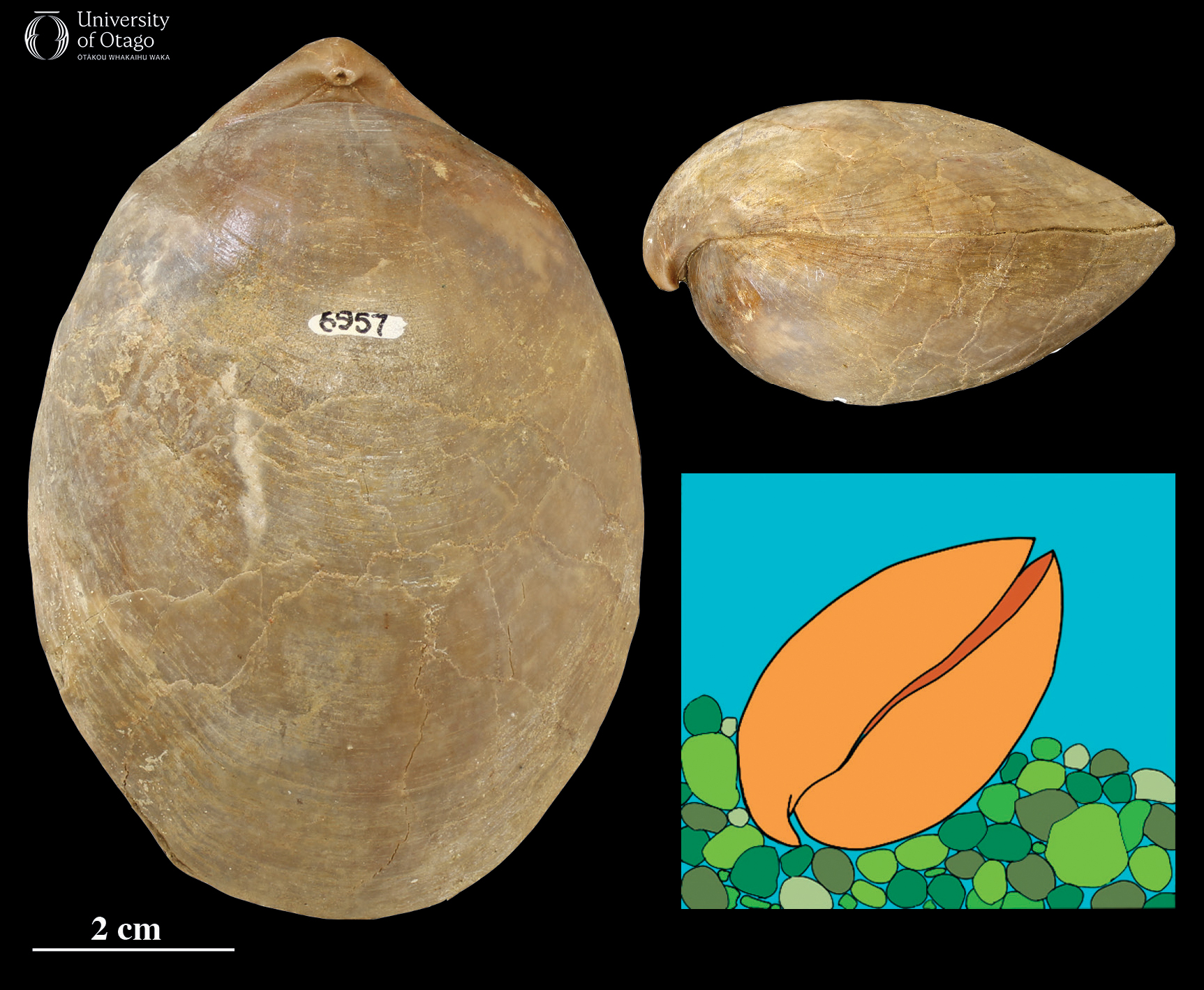46 Massive free-lying brachiopod
Brachiopoda, Terebratulida: Erihadrosia epsilon
One of the variety of life habits that brachiopods have evolved is known as ‘free-lying’. While juveniles of free-lying brachiopods are probably always attached to a hard substrate (ie a shell or pebble) by their pedicle, as these species get larger they allow their pedicle to wither and they lie on the sea floor on soft sediments. The foramen is tiny in adults.

An example of the brachiopod Erihadrosia epsilon in different views, including a reconstruction of how it would have sat on the sea floor (specimen OU 6957). Image credit: JH Robinson with illustration adapted from Richardson (1981). |
Brachiopods must open their shells (at the ‘anterior’ end) in order to feed by filtering tiny food particles out of the sea water. Free-lying brachiopods thicken the posterior end of the shell so it is much heavier and sinks a little into the soft sediment, raising up the anterior end.
Many different genera and species of brachiopod have adopted this free-lying habit over their 500 million year history. In New Zealand the most impressive species is Erihadrosia epsilon (originally called Stethothyris epsilon); single specimens can be up to 10 cm long.
Erihadrosia lived in shallow shelf environments around New Zealand during the Middle Miocene.
—Written by Jeffrey H Robinson
| Specimen number: OU 6957 | Age: Approximately 14 million years old (middle Miocene, Lillburnian stage) |
| Locality: Cucullaea Shellbed, Clifden, Southland | Rock Formation: Clifden Limestone |
| Collected by: JD Campbell and others | |
| Citation: Hiller N, MacKinnon DI. 2000. A reappraisal of the systematics of the Stethothyris group of brachiopods from the Cenozoic of New Zealand and Australia. New Zealand Journal of Geology and Geophysics 43:59–81. doi.org/10.1080/00288306.2000.9514870 | |
The stalk that attaches a brachiopod to the substrate.
The hole in the umbo that the pedicle passes through.
Richardson JR. 1981. Distribution and orientation of six articulate brachiopod species from New Zealand. New Zealand Journal of Zoology 8:189–196. doi.org/10.1080/03014223.1981.10427961
15.97 million to 11.04 million years ago. The Middle Miocene is a sub-epoch that spans the international Langhian and Serravallian stages.

